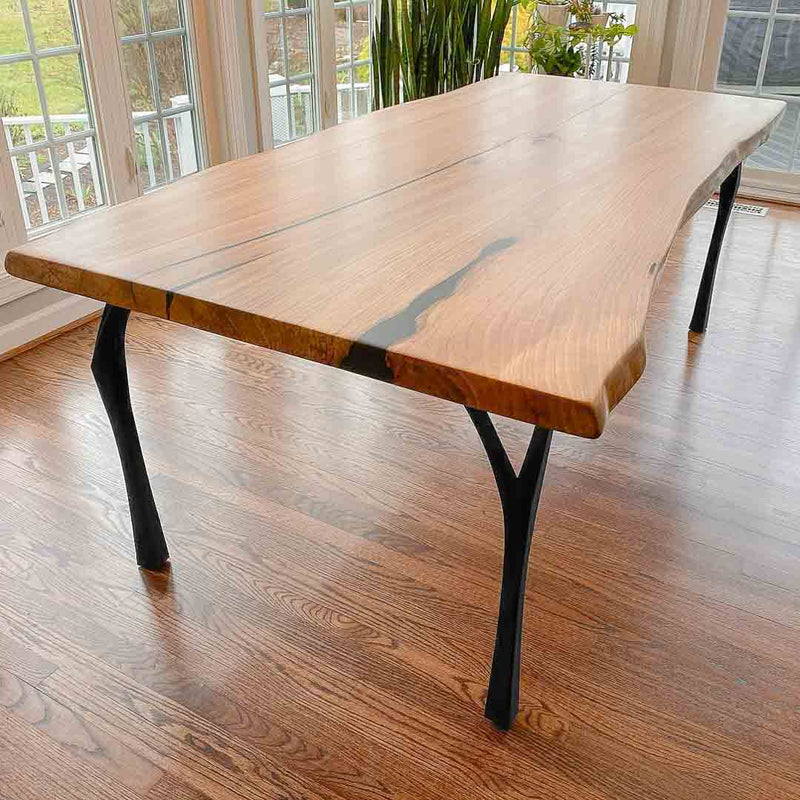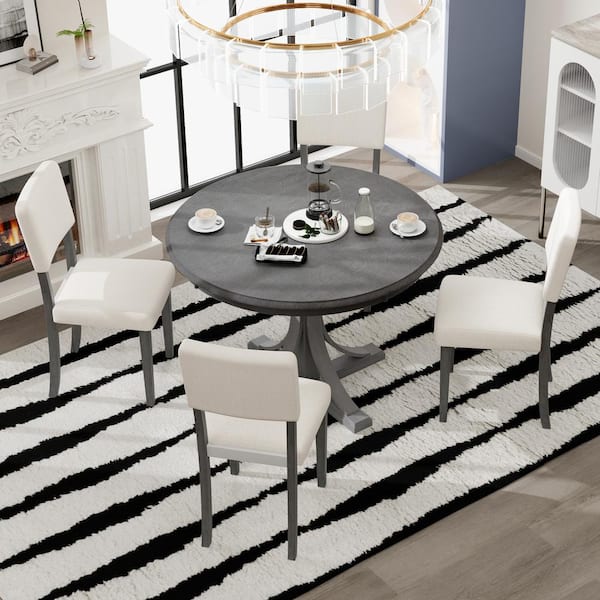Enhance Your Dining Room with Unique and Modern Dining Room Table Legs
Wiki Article
How to Select the Perfect Dining-room Table Legs for Your Home Design
Choosing the ideal dining space table legs is a nuanced process that calls for cautious consideration of different components, including your area restrictions, aesthetic preferences, and practical demands. The interplay between designs, dimensions, and products can substantially influence the ambiance of your eating area, making it vital to approach this decision carefully.Assess Your Eating Area
Evaluating your eating area is essential for selecting the right table legs that match both aesthetics and capability. Begin by measuring the dimensions of your dining location, consisting of ceiling height, flooring area, and proximity to various other furnishings. This info will assist identify the ideal size and elevation of your dining table, which straight influences the selection of table legs.Following, think about the design and layout of your eating room. For instance, an open-concept style may gain from table legs that supply visual lightness, such as slim steel or acrylic options. Alternatively, an extra traditional setting might ask for durable wooden legs that supply a feeling of permanence.
Review the existing shade palette and products in your dining area. Balancing the table legs with these aspects creates a cohesive look that improves the general decoration.
Inevitably, an extensive assessment of your eating room will certainly assist you in making a notified decision, ensuring that your table legs not only boost the aesthetic charm however also serve useful functions.
Consider Your Style Preferences
When choosing dining-room table legs, it is necessary to review your personal design choices, as they dramatically affect the general aesthetic of your eating space. Your choice of table legs can either enhance or comparison with existing design, making it important to align them with your recommended indoor design motif.If your home leans towards a contemporary aesthetic, consider streamlined steel or minimal wooden legs that give a clean, uncluttered look. For a much more typical technique, ornate wood legs with elaborate makings can add a touch of elegance and refinement. Industrial styles profit from robust, basic materials such as reclaimed timber and steel combinations, mirroring a rugged beauty.
Additionally, farmhouse and rustic designs usually favor sturdy, beefy legs that stimulate a sense of heat and comfort. On the other hand, if your decor is eclectic, you could choose unique forms or a mix of materials to create aesthetic interest.

Evaluate Product Options
The selection of material for eating area table legs plays a pivotal function in both toughness and visual appeal. Common materials include wood, steel, and composite choices, each offering unique attributes that can affect the total appearance and durability of your table.Wood is a classic option, understood for its heat and versatility. Hardwoods like oak and walnut provide extraordinary stamina and can be ended up in numerous discolorations to match any design. Nevertheless, softwoods like want are a lot more vulnerable to scrapes and dents, making them less optimal for high-traffic areas.
Metal legs, usually crafted from steel or light weight aluminum, exude modernity and commercial beauty. They are extremely long lasting and resistant to put on, making them appropriate for households with children or frequent celebrations (dining room table legs). Furthermore, steel can be completed in various shades, improving the personalization possibilities
Composite products, such as MDF or laminate, deal price and diverse layouts. While commonly much less resilient than strong wood or steel, they can still supply a trendy look and are commonly simple to keep.
Eventually, the material you select ought to align with your way of living, aesthetic choices, and the level of usage your table will certainly experience.
Determine Elevation and Size
Picking the proper elevation and size for your eating area table is crucial for both capability and comfort. The standard elevation for eating tables commonly ranges from 28 to 30 inches, permitting sufficient legroom for the majority of individuals when seated. It is crucial to consider the measurements of your dining room and the kinds of chairs you prepare to make use of.
Furthermore, consider the percentages of your dining-room. A larger table in a roomy area can produce a grand atmosphere, while a smaller sized table works well in more intimate settings. Ultimately, the best height and size will harmonize with your general decoration and improve the dining experience for you and your guests.
Explore Personalization Opportunities

In addition, the style of the legs can be customized to fit various designs, such as rustic, contemporary, or industrial. Conical legs can evoke a mid-century modern-day feel, while beefy, block-style legs might reverberate with conventional or farmhouse decor.
Home owners can likewise explore shade finishes, from all-natural wood discolorations to paint, enabling them to match or comparison with the tabletop and bordering design.
Moreover, leg elevation can be adapted to suit navigate to this site particular seating setups or individual preferences, boosting both comfort and performance.
Lastly, special embellishments, such as carvings or attractive brackets, can further individualize the table legs, making the dining experience not simply a statement but a meal item in the home. By thinking about these customization options, home owners can create an eating space table that absolutely reflects their individuality.
Conclusion
Choosing the excellent dining-room table legs requires mindful consideration of numerous factors, consisting of the dimensions of the dining area, design choices, material sturdiness, and wanted elevation. Customization options even more improve the capacity to attain a cohesive aesthetic that complements the total decor. By systematically examining these components, homeowners can make sure that the picked table legs not only satisfy practical demands however additionally add favorably to the eating experience and setting of the home.Selecting the perfect dining room table legs is a nuanced process that requires careful factor to consider of various elements, including your room restraints, visual choices, and sensible demands.Analyzing your eating space is important for choosing the right table legs that complement both looks and capability.When figuring out size, measure the area where the table will certainly be positioned to guarantee it fits comfortably, permitting for great site at the very least 36 inches of clearance around the table for simple motion. A larger table in a sizable location can produce a grand ambiance, while a smaller sized table functions well in more intimate settings.Picking the suitable dining room table legs calls for cautious consideration of various aspects, including the measurements of the eating space, design choices, material durability, and wanted height.
Report this wiki page